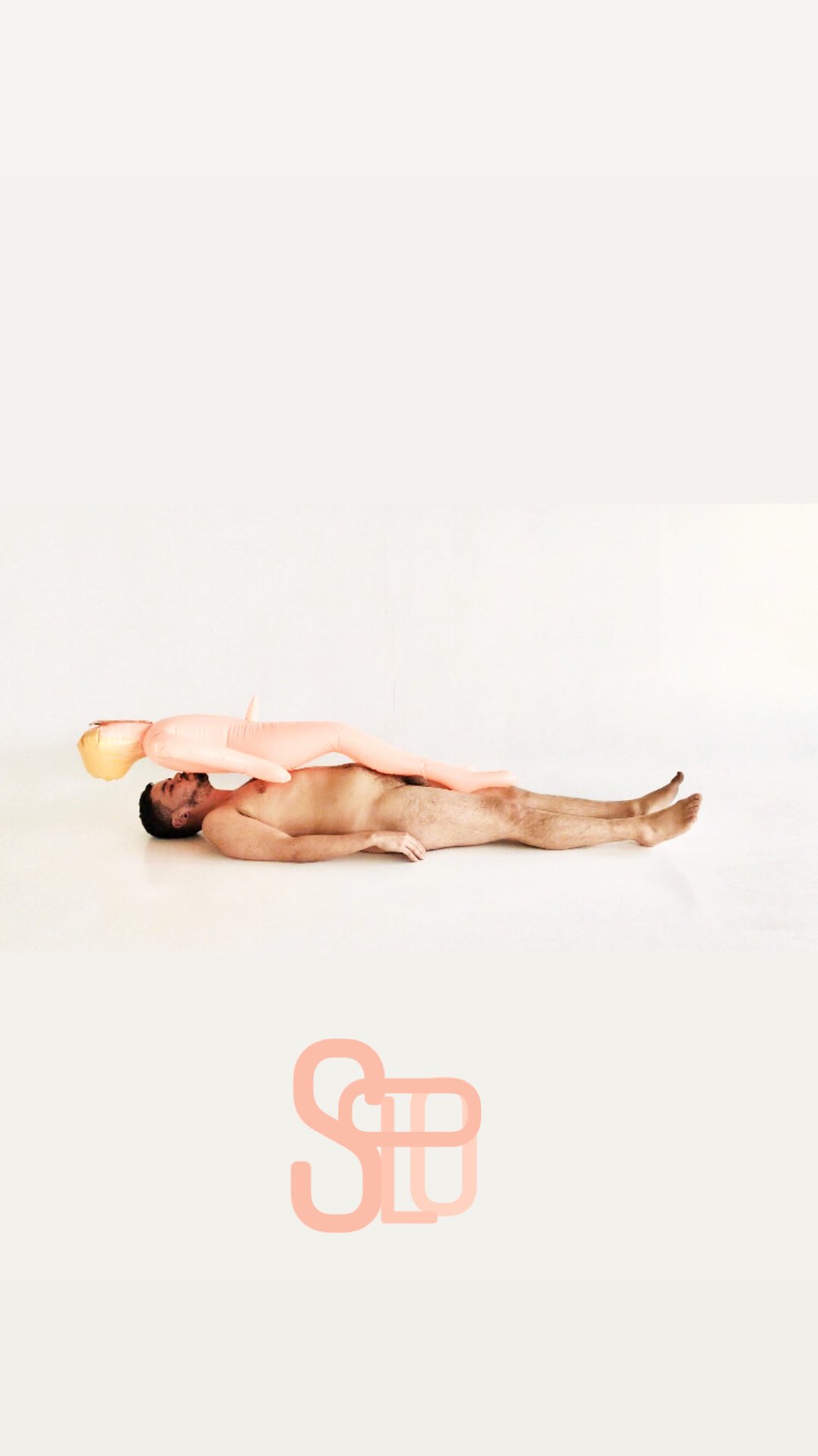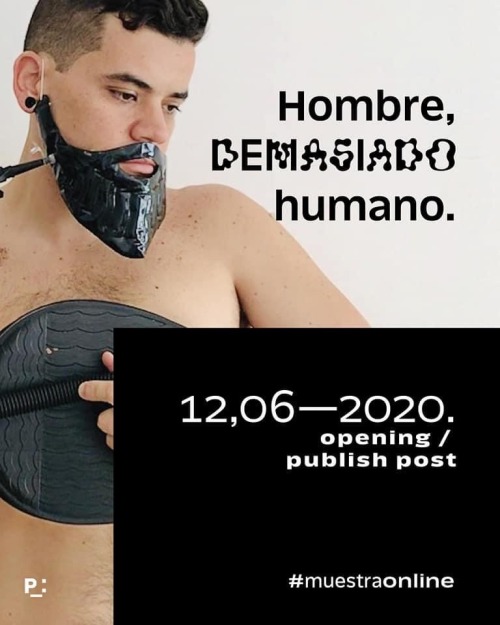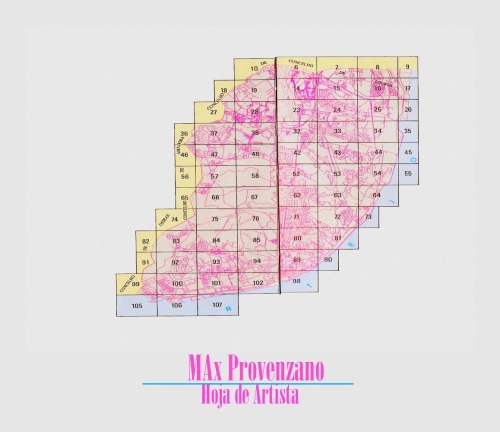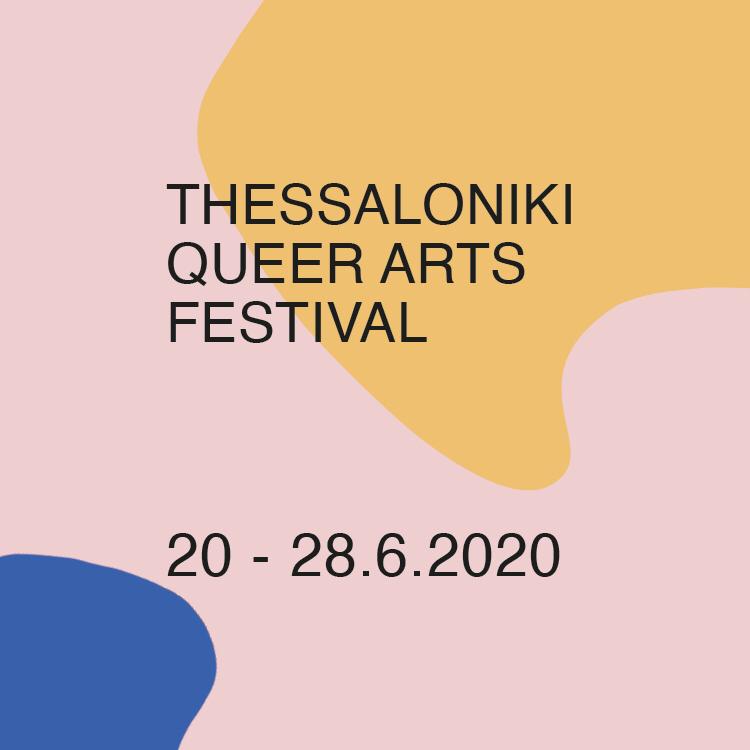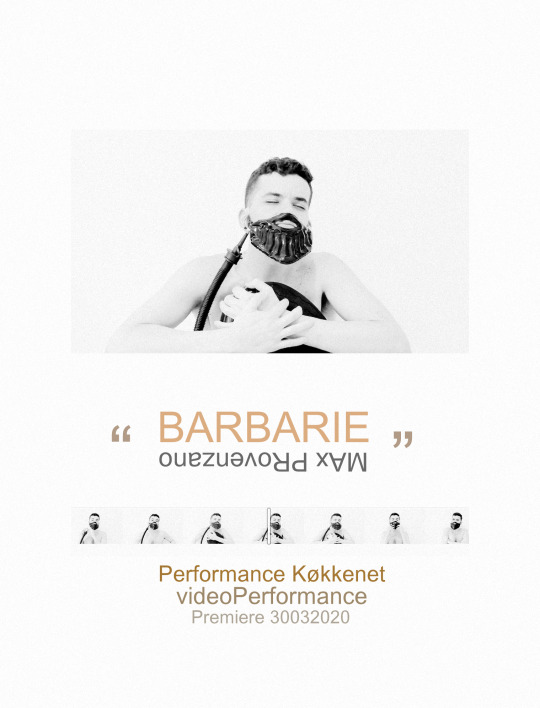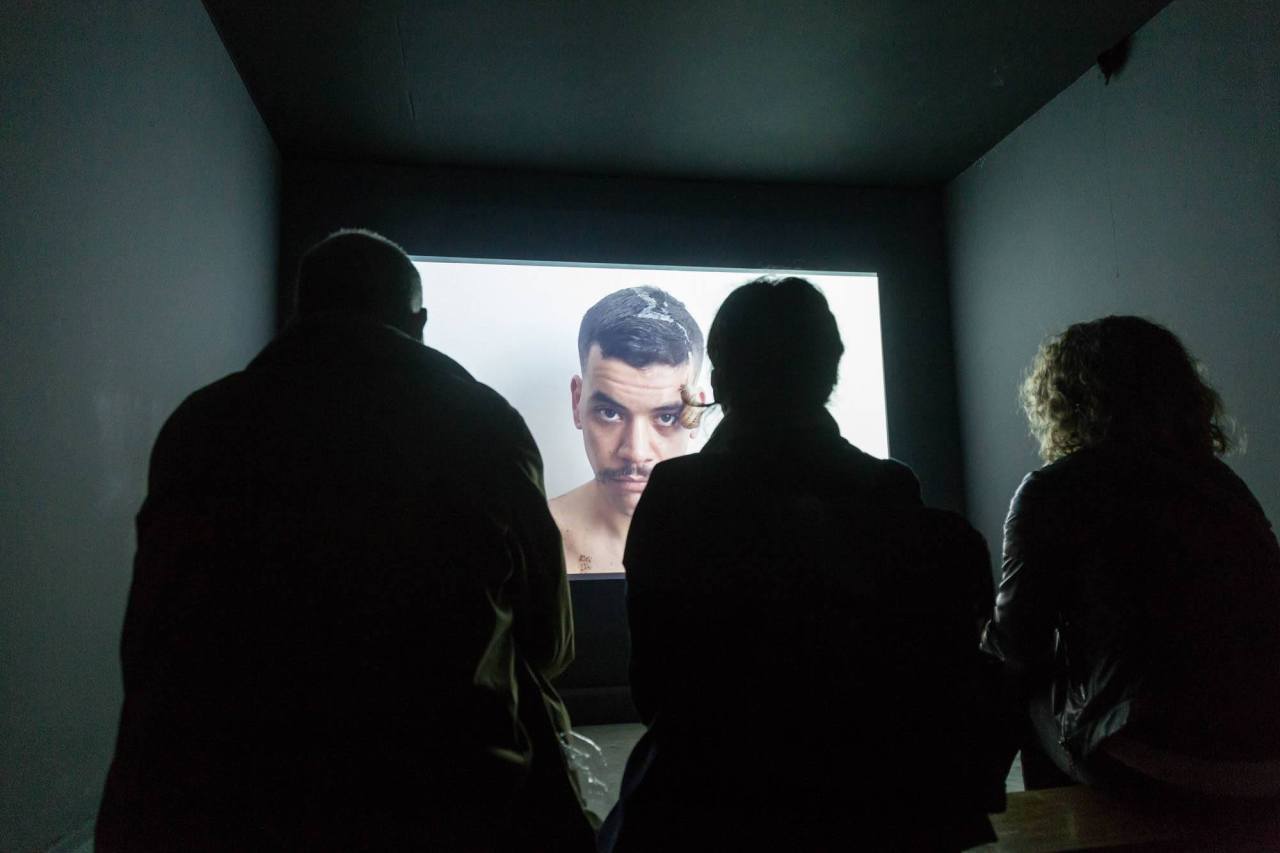domingo, 29 de noviembre de 2020
VI Festival Video nodoCCS
⋮nodoCCS⋮ is happy to announce the list of the selected artists to be part of the VI Festival de Video nodoCCS!!! Congratulations to all! In total 45 Videos from 24 countries
Thanks to the Jury: Carlos Castillo, Sara Skorgan Teigen, Ángela Bonadies, Alexander Apóstol, the nodoCCS Founders Maria Bilbao Herrera & Diana Rangel, and the MFA students from Agder University in Norway for being part of the selection process
Attentive to our networks that this year the Festival will come with an online program where the hope is to move without traveling to attend the Festival in arteriet, the gallery that this year welcomes the event in Kristiansand, Norway.
Participating with the videoPerformance S0L0 (2019)
domingo, 16 de agosto de 2020
miércoles, 12 de agosto de 2020
jueves, 6 de agosto de 2020
miércoles, 5 de agosto de 2020
domingo, 2 de agosto de 2020
viernes, 10 de julio de 2020
Venus of Captivity
Fear is a barrier that leads us to distance
ourselves from what represents a threat, it is a sway of the consequences of
not being able to show something, not being able to experience it, feel it or
feel in it. In any case it is necessary to speak of body(ies) when we mention
fear, in extreme situations the body can be blurred by the gravity of the
context as well as the territory, from this perspective it is possible to
visualize the body as a blurred territory. From captivity I can think about the
possibility of giving up physical contact and about the disposition I have to
dissuade this need, the dense atmosphere of Venus causes meteorites to
disintegrate abruptly on their descent to the surface, the planet remains
intact, so We are not talking about a single body, it´s more about a social one,
a collective body. It is not only a space, it is also a deity of eroticism,
which blurs sex and in some cases affects gender, questioning identity,
blurring it and driving us to review beyond the content, the forms. Within this
fight it remains to bet the use of the technology in our advantage, there is an
emergency, Venus is invaded by a virus, viruses are particles formed by nucleic
acids surrounded by proteins, with the ability to reproduce at the expense of
cells that invade, viruses invade other viruses, but in turn all this conquest
depends on the survival of the host, on the other in order to ensure their own
survival, fulfill their objective and be satisfied with personal interests. In
the opposite case, as the host does not survive, the virus must migrate to
another Venus, to another body, space or territory.
sábado, 4 de julio de 2020
Anotaciones sobre el Placer en los Procesos de Trabajo (I)- Mollusca
Anotaciones sobre el placer en los procesos de trabajo (I)
Artistas e investigadores comparten reflexiones sobre sus procesos creativos e intelectuales.
Fuente> Mollusca
viernes, 1 de mayo de 2020
Thessaloniki Queer Arts Festival
TQAF 2020 x VIRTUAL
“τι είναι φόβος; what is fear?”
Thessaloniki Queer Arts Festival (TQAF) is a grassroots initiative that sets out to alter deeply entrenched misconceptions and prejudices toward the queer and LGBTQIA community through artistic and cultural practices.
TQAF’S VISION
The festival was founded by Tomas Diafas in 2018, together with a dedicated team of volunteers, who endeavour to provide queer artists with a platform to investigate sociocultural phenomena relating to queer identities and experiences. TQAF has been formed through collaborations in which our team has collectively curated the festival programme.
The festival is driven by the belief that art has the power to open new avenues of communication as well as serve as a bridge between a diverse array of individuals and social groups. TQAF aims to foster dialogues and develop alternative methods for addressing social discrimination.
Through a series of online interventions, TQAF 2020 aims to offer the opportunity for underrepresented LBGTQIA artists, writers and activists from across the Balkans and other selected regions to reveal their practice to a spectating audience from 20-28 June, 2020. This year, TQAF will be showcasing selected works, performances and workshops digitally.
THESSALONIKI
Thessaloniki is strategically located between the Balkans, Turkey and the Middle East, regions where LGBTQIA communities are often marginalised. As we develop strategies for addressing prejudice and resistance to queer inclusiveness in Greece, TQAF will serve as a political and inspirational link to neighbouring societies. As a breeding ground for queer discourse and artistic creation, we hope that the festival’s impact will extend beyond the borders of Greece.
More info about the Festival-----> https://queerartsfestival.gr/
viernes, 10 de abril de 2020
Una Constelación de Mollusca
Mollusca es una plataforma de arte contemporáneo en Venezuela, recientemente ha publicado un catálogo digital de los artistas contemporáneos que participaron en su campaña de recaudación de fondos en el 2019.
2019: UNA CONSTELACIÓN // A CONSTELLATION es un ebook bilingüe e interactivo que ha diseñado el equipo de Mollusca en dos formatos de lectura (.epub y .pdf) que se puede descargar en el siguiente enlace
≈
Mollusca is a contemporary art platform in Venezuela, recently has published an online book of contemporary artists who participated in a crowdfunding campaign in 2019.
2019: UNA CONSTELACIÓN // A CONSTELLATION is a bilingual and interactive ebook that Mollusca team have designed in two reading formats (.epub and .pdf) which you can download here
sábado, 4 de abril de 2020
MAneki Oscillator
MAneki Oscillator es una re-apropiación de un READYMAx ideado previamente ( 招き猫 18032019), este objeto forma parte de la cosmogonía de mi habitación, la activación mediante esta acción para la cámara surge como consecuencia de la invitación a formar parte del proyecto @Zoonosisproject (Instagram) ideado por la artista y curadora Carolina Sanz como consecuencia del COVID-19. Este vídeo forma parte de una serie de acciones en las que utilizo una metodología que denomino >
[ES]
Un movimiento oscilatorio se produce cuando al trasladar un sistema de su posición de equilibrio, una fuerza restauradora lo obliga a desplazar a puntos simétricos con respecto a esta posición. Se dice que este tipo de movimiento es periódico porque la posición y la velocidad de las partículas en movimiento se repiten en función del tiempo. El tiempo oscilante entre el espacio público y el espacio íntimo
[PT]
Um movimento oscilante ocorre quando o sistema se move de sua posição de equilíbrio por uma força restauradora que o obriga a se mover para um ponto simétrico em relação a essa posição. Esse movimento é chamado de movimento periódico porque a posição e a velocidade das partículas em movimento se repetem ao longo do tempo. Tempo de oscilação entre espaços públicos e privados
[EN]
An oscillatory motion occurs when a system is moved from its equilibrium position by a restoring force forcing it to move to points symmetric with respect to this position. This type of movement is said to be periodic because the position and velocity of the moving particles repeat as a function of time. The oscillating time between public space and intimate space
[CN]
當系統通過恢復力從其平衡位置移動時發生振盪運動,該恢復力迫使系統移動到相對於該位置對稱的點。 這種運動稱為周期性運動,因為運動粒子的位置和速度會隨著時間重複。 公共和私人空間之間的振盪時間
[NO]
En svingende bevegelse oppstår når systemet beveger seg fra sin likevektsposisjon med en gjenopprettende kraft som tvinger det til å bevege seg til et punkt som er symmetrisk med hensyn til den posisjonen. Denne bevegelsen kalles periodisk bevegelse fordi posisjonen og hastigheten til de bevegelige partiklene gjentas over tid. Oscillation tid mellom offentlige og private rom
[RU]
Колебательное движение происходит, когда система движется из своего равновесного положения с помощью восстанавливающей силы, которая заставляет ее двигаться в точку, которая является симметричной относительно этого положения. Это движение называется периодическим движением, потому что положение и скорость движущихся частиц повторяется со временем. Время колебаний между публичным и частным пространством
Lisboa, Portugal
28032020
martes, 31 de marzo de 2020
BARBARIE
[EN]
<< Civilization can only
be understood from Barbarism. The "substance" of Barbarism and
Civilization is the same: the "Human Culture". The transition from
Barbarism to Civilization is a necessary and deterministic process. "Civilization"
is the dialectical negation of Barbarism: this, while being denied, is
incorporated into Civilization>> (Philosophical dictionary: http://www.filosofia.org/filomat/df242.htm)
Barbarie (Barbarism in
English) is a videoPerformance based on a mix of layers, in due the global
situation we are all living, I decide to work with the concept of beard,
located in a vulnerable region of our body in this moment, from biology beards
are meant to protect the face but is a condition only for men. The body is
individual but at the same time becomes collective; I assume the stereotyped
view of the contemporary man and also the idea of the force and his
vulnerability. The audio is about an analysis of the story of beard in our
civilization and culture; this was found by a simple search in internet. I use
an inflatable object as an extension of the body, assisted by an inflator, a
satirical way. This work is done with objects, information and devices that are
close to me at home, the text is a simple mix of Wikipedia´s information
narrated by the Google Translator voice; a way to show how our communication
nowadays is under an external´s platform condition, there is a filter between
social networks, phones and reality. This is a reflection that comes to me
inside this isolation moment. How our civilization is built by images of strong
men through history, this is a moment to think and ask about the pre-concepts
of our society. A particular situation that brings all of us as a social body,
anywhere we are located.
[ES]
<< La civilización solo puede entenderse desde la barbarie. La "sustancia" de la barbarie y la civilización es la misma: la "cultura humana". La transición de la barbarie a la civilización es un proceso necesario y determinista. La "civilización" es la negación dialéctica de la barbarie: esto, aunque se niega, se incorpora a la civilización>>. (Diccionario filosófico: http://www.filosofia.org/filomat/df242.htm)
Barbarie (Barbarismo en inglés) es un videoperformance generado a partir de una serie de capas de información, debido a la situación global que todos vivimos, decido trabajar con el concepto de barba, ubicado en una región vulnerable de nuestro cuerpo en este momento. Desde el punto de vista biológico, están destinadas a proteger la cara, pero es una condición única para hombres. El cuerpo es una realidad individual pero al mismo tiempo se vuelve colectivo, se expande esta noción; Asumo la visión estereotipada del hombre contemporáneo y también la idea de la fuerza y su vulnerabilidad. El audio trata sobre un análisis de la historia de la barba en nuestra civilización y cultura; fue encontrado por una simple búsqueda en Internet. Utilizo un objeto inflable como una extensión del cuerpo, asistido por un inflador, de forma satírica. La pieza es realizada con objetos, información y dispositivos que se encuentran a mi alrededor, en mi habitación, el texto es una simple mezcla de información de Wikipedia narrada por la voz del Traductor de Google; Una forma de mostrar cómo nuestra comunicación hoy en día está bajo una condición de plataforma externa, hay un filtro entre las redes sociales, los teléfonos y la realidad. Esta es una reflexión que viene a mí dentro de este momento de aislamiento. Cómo nuestra civilización se construye con imágenes de hombres fuertes a través de la historia, este es un momento para pensar y preguntar sobre los pre-conceptos, estereotipos y su influencia de nuestra sociedad. Una situación particular que nos lleva a todos como un cuerpo social, donde sea que estemos ubicados.
MAx Provenzano
BARBARIE
30032020
lunes, 30 de marzo de 2020
BARBARIE
Barbarie is a videoPerformance that will be displayed by Performance Køkkenet in due the QuAR(T)antine video performance open call
Premiere 30032020 in this link
https://www.youtube.com/watch?v=hQpw1grJOEM&feature=youtu.be
https://www.youtube.com/watch?v=hQpw1grJOEM&feature=youtu.be
Civilization can only be understood from Barbarism. The "substance" of Barbarism and Civilization
is the same: the "Human Culture". The transition from Barbarism to Civilization is a necessary and
deterministic process. "Civilization" is the dialectical negation of Barbarism: this, while being denied,
is incorporated into Civilization. (Philosophical dictionary:http://www.filosofia.org/filomat/df24...)
is the same: the "Human Culture". The transition from Barbarism to Civilization is a necessary and
deterministic process. "Civilization" is the dialectical negation of Barbarism: this, while being denied,
is incorporated into Civilization. (Philosophical dictionary:http://www.filosofia.org/filomat/df24...)
This videoPerformance will be part of the archive of Performance Køkkenet
sábado, 14 de marzo de 2020
Crónicas Migrantes: Historias Comunes entre Perú y Venezuela
[EN]
Collective exhibition participating with Ostracismo and Atlas videos
The current Venezuelan migration is the greatest exodus in the history of the region and one of the largest displacement crises in the world. The exhibition Crónicas Migrantes. Historias Comunes entre Perú y Venezuela, was presented at the Museum of Contemporary Art of Lima (MAC Lima) from September 12 to February 2 of 2020, proposes to think about this migratory phenomenon from the practices of contemporary art.
More than thirty Peruvian and Venezuelan artists present textile, sound, video performance, collage and drawing proposals, as well as artist books and photobooks. The selection includes works by renowned Peruvian artists who are sensitized to the current Venezuelan reality, or who recall critical situations, forced displacement and external migration in national history. These dialogue with the works of Venezuelan artists, who are representative of the visual narratives of exile, some of which do not allude directly to the central theme but to contextual factors or ethical reflections.
Under the curatorship of Fabiola Arroyo, the exhibition is guided by four concepts: word, body, house and territory.
Participating artists: Miguel Aguirre (PER), Alessandro Balteo-Yazbeck (VEN), Fernando “Coco” Bedoya (PER), Lin Belaúnde (PER), Alicia Caldera (VEN), Iván Candeo (VEN), Marylee Coll (VEN) ), CJ Chueca (PER), Enrique Doza (VEN), Gabriela Gamboa (VEN), Gilda Mantilla (PER) & Raimond Chaves, José Carlos Martinat (PER), José Luis Martinat (PER), Ana Mosquera (VEN), Juan José Olavarría (VEN), Erika Ordosgoitti (VEN), Andrés Pérez González (PER), MAx Provenzano (VEN), María Octavia Russo (VEN), Juan Javier Salazar (PER), Paola Torres Núñez del Prado (PER), Giancarlo Valverde (PER), Teresa Mulet (VEN) and Julia Zurilla (VEN). In the Public Program: Grupo Gallinazo (Gonzalo Benavente, Rafael Jiménez, Juan Carlos Ortiz and Maribel Martínez), Luisa Fernanda Lindo, Emilio Santisteban and Marcos Temoche.
[ES]
Exposición colectiva en la que participo con los vídeos Ostracismo y Atlas
La migración actual venezolana es el mayor éxodo en la historia de la región y una de las crisis de desplazamientos más grandes del mundo. La exposición Crónicas Migrantes. Historias comunes entre Perú y Venezuela, se presentó en el Museo de Arte Contemporáneo de Lima (MAC Lima) del 12 de septiembre al 2 de febrero del 2020, propone pensar en este fenómeno migratorio desde las prácticas del arte contemporáneo.
Más de treinta artistas peruanos y venezolanos presentan propuestas textiles, sonoras, video performance, collage y dibujo, así como libros de artista y fotolibros. La selección incluye obras de reconocidos artistas peruanos sensibilizados por la actual realidad venezolana, o que rememoran coyunturas críticas, los desplazamientos forzados y las migraciones externas de la historia nacional. Estas dialogan con las obras de artistas venezolanos, que son representativas de las narrativas visuales del destierro, algunas de las cuales no aluden directamente al tema central sino a factores contextuales o a reflexiones éticas.
Bajo la curaduría de Fabiola Arroyo, la exposición está orientada por cuatro conceptos: palabra, cuerpo, casa y territorio.
Participan en la muestra: Miguel Aguirre (PER), Alessandro Balteo-Yazbeck (VEN), Fernando “Coco” Bedoya (PER), Lin Belaúnde (PER), Alicia Caldera (VEN), Iván Candeo (VEN), Marylee Coll (VEN), C.J Chueca (PER), Enrique Doza (VEN), Gabriela Gamboa (VEN), Gilda Mantilla (PER) & Raimond Chaves, José Carlos Martinat (PER), José Luis Martinat (PER), Ana Mosquera (VEN), Juan José Olavarría (VEN), Erika Ordosgoitti (VEN), Andrés Pérez González (PER), MAx Provenzano (VEN), María Octavia Russo (VEN), Juan Javier Salazar (PER), Paola Torres Núñez del Prado (PER), Giancarlo Valverde (PER), Teresa Mulet (VEN) y Julia Zurilla (VEN). En el Programa Público: Grupo Gallinazo (Gonzalo Benavente, Rafael Jiménez, Juan Carlos Ortiz y Maribel Martínez), Luisa Fernanda Lindo, Emilio Santisteban y Marcos Temoche.
Fuente Museo de Arte Contemporáneo de Lima
Suscribirse a:
Entradas (Atom)



